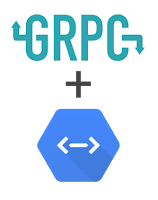Manage your gRPC APIs with Google Cloud Endpoints
Dan Ciruli
Product Manager
For the last two years, we at Google have put heavy investment in gRPC — in both the open source framework itself and in our own gRPC-based APIs. We see it as an essential component for microservices, but also for many public-facing APIs (especially those with low latency tolerance, the need for bi-directional streaming or heavy mobile use). And now, you can define and run a gRPC API and serve both gRPC and JSON-HTTP/1.1 to your clients using Google Cloud Endpoints!
Most of the APIs that we’ve released recently serve both a gRPC and an HTTP/1.1-JSON interface. Starting with Cloud Pub/Sub release in March 2016, we’ve announced a steady stream of APIs that use gRPC: Cloud Bigtable, Cloud Pub/Sub, Cloud Vision API, Cloud Datastore, Cloud Speech API and of course the recently announced Cloud Spanner API among others.
Serving a gRPC interface gives us the latency and bandwidth characteristics we need at scale and ensures all clients are using a compatible client library.


However, we still serve a JSON-HTTP/1.1 interface for these APIs. Why? Well, millions of developers are comfortable with JSON. It offers a really easy getting started experience (call it with curl, or just paste a request into any browser). There are great JSON libraries in every language available on essentially every platform. So even though the world is moving to gRPC for APIs that require streaming and high performance, supporting JSON-HTTP/1.1 remains a high priority.
Now you too can offer both gRPC and JSON-HTTP/1.1 for your APIs. Cloud Endpoints fully supports gRPC-based APIs (including all the same great Endpoints features it offers for HTTP/1.1 APIs: authentication, monitoring, logging, tracing, API keys, etc). And the Extensible Service Proxy will also translate JSON-HTTP/1.1 calls, so you can write your API once and serve both interfaces.
Getting started is simple. Define a gRPC service using a .proto file, then add a YAML config file to map that gRPC interface to REST JSON.
For example, you may have a simple service that defines a Bookshelf:
Your service configuration YAML tells Endpoints how to map that RPC interface to RESTful paths:
Your service configuration YAML can also specify authentication (for example, only permit a specified service account to call the API):
For full docs on how to create the transcoding mapping, see the docs at https://cloud.google.com/endpoints/docs/transcoding.
We have gRPC/Endpoints samples in four different languages: Python, Go, Java and Node.js. Better yet, we’ve got lots of customers using gRPC and Endpoints together already. So try the sample, head over to our Google Group to ask a question, and go make APIs!


